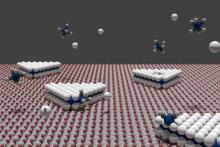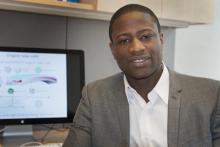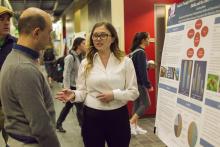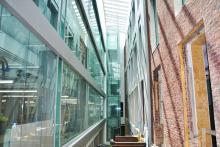Since the discovery of the remarkable properties of graphene, scientists have increasingly focused research on the many other two-dimensional materials possible, both those found in nature and those concocted in the lab. However, growing high-quality, crystalline 2-D materials at scale has proven a significant challenge.
A grant totaling $1.2 million over three years has been awarded to researchers at Penn State and Cornell University by the National Science Foundation to identify a material that can most efficiently separate water into hydrogen and oxygen, to collect hydrogen as a sustainable fuel source.
Medical devices powered by synthetic proteins created from repeated sequences of proteins may be possible, according to materials science and biotechnology experts, who looked at material inspired by the proteins in squid ring teeth.
During a 2017 educational-based trip to Alaska that was focused on glacial systems, Courtney Rome began studying something that wasn’t on the syllabus. Her curiosity resulted in an award-winning poster at the annual EMS Undergraduate Poster Exhibition.
Steidle Building, one of the most iconic buildings on Penn State’s University Park campus, has earned LEED Silver certification from the U.S. Green Building Council following an extensive renovation.
John Mauro used the composition of glass found in the windows of London's Westminster Abbey to determine the glass's flow to a liquid is much faster than previously thought but still too slow to account for the windows being thicker at the bottom.









